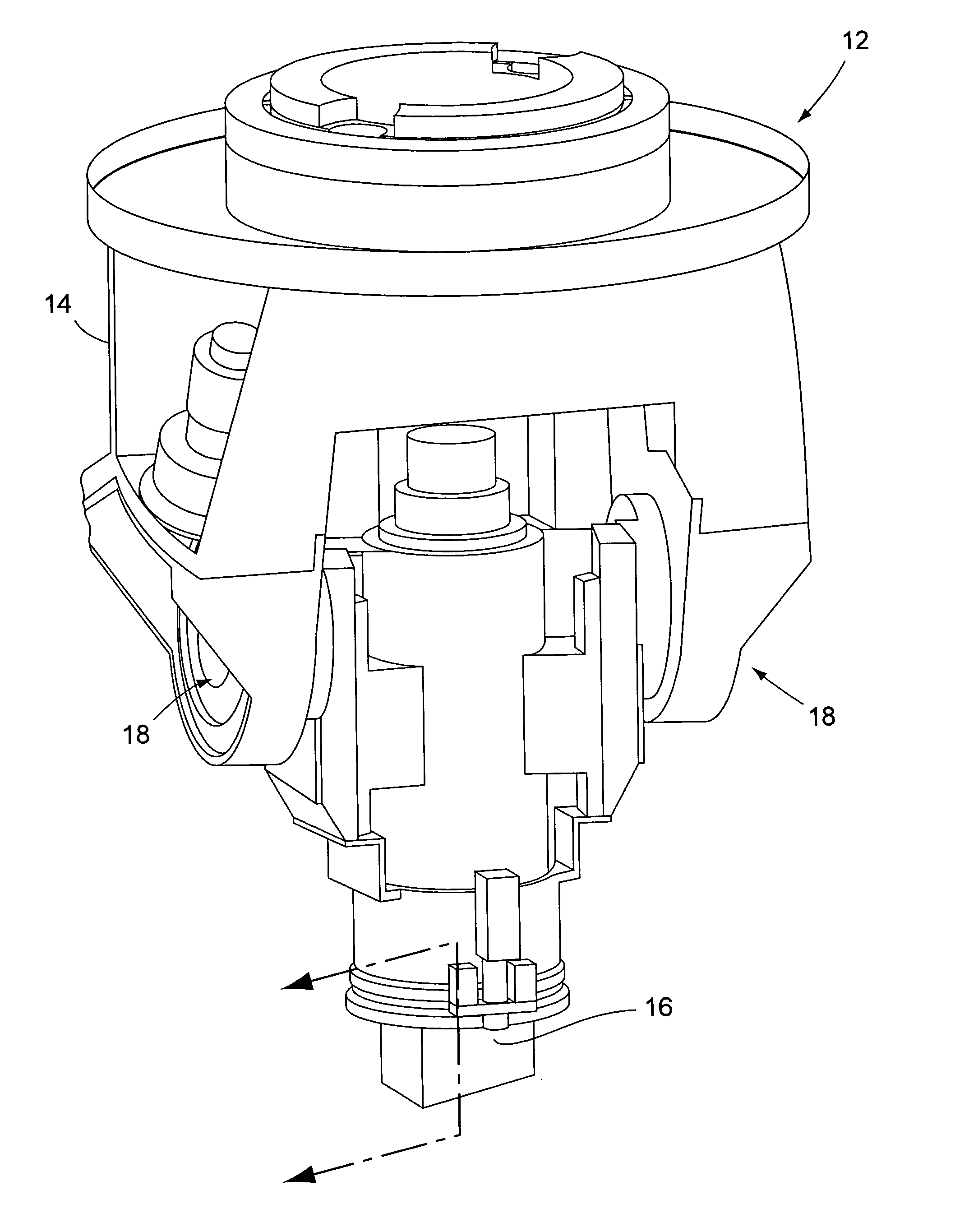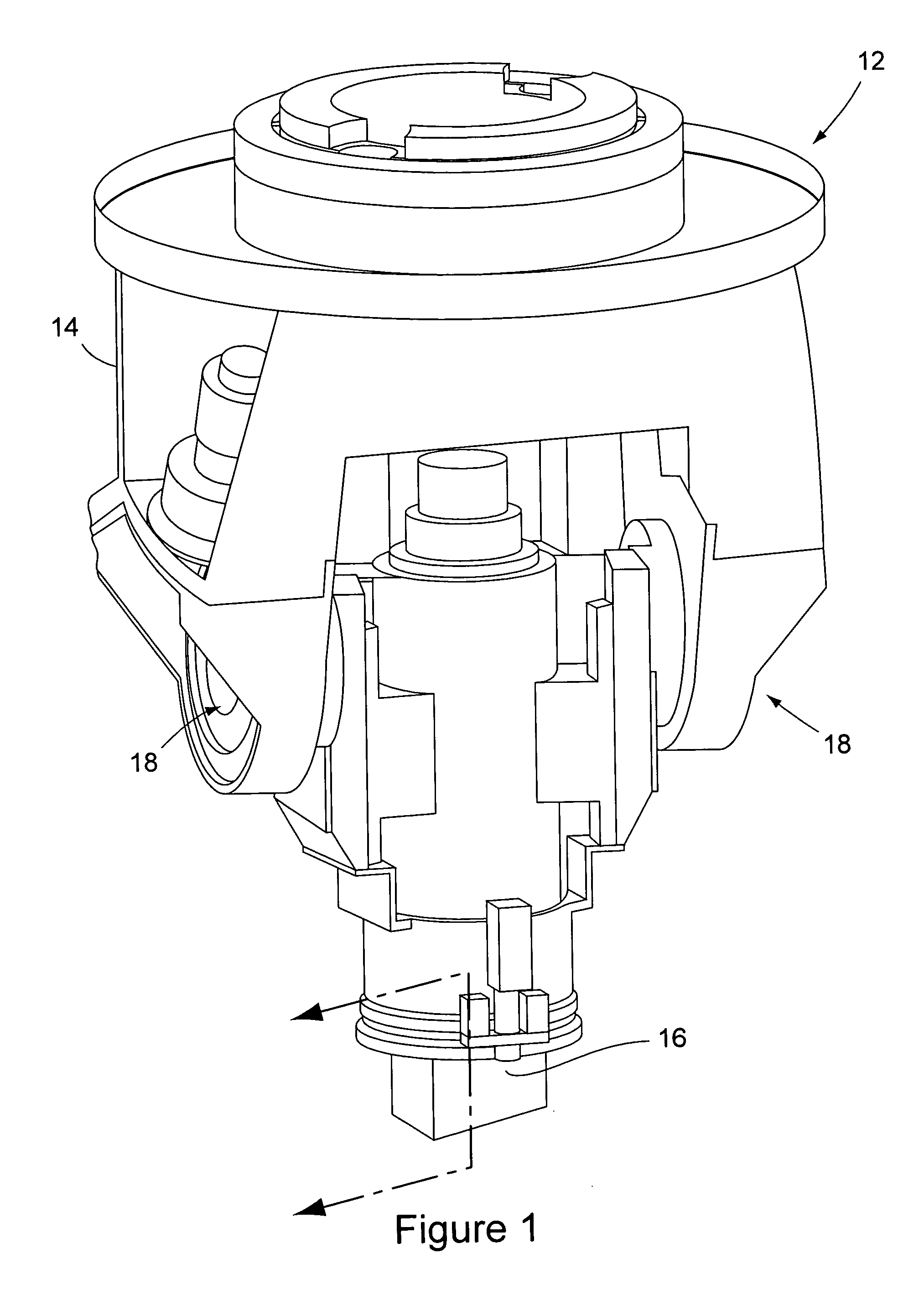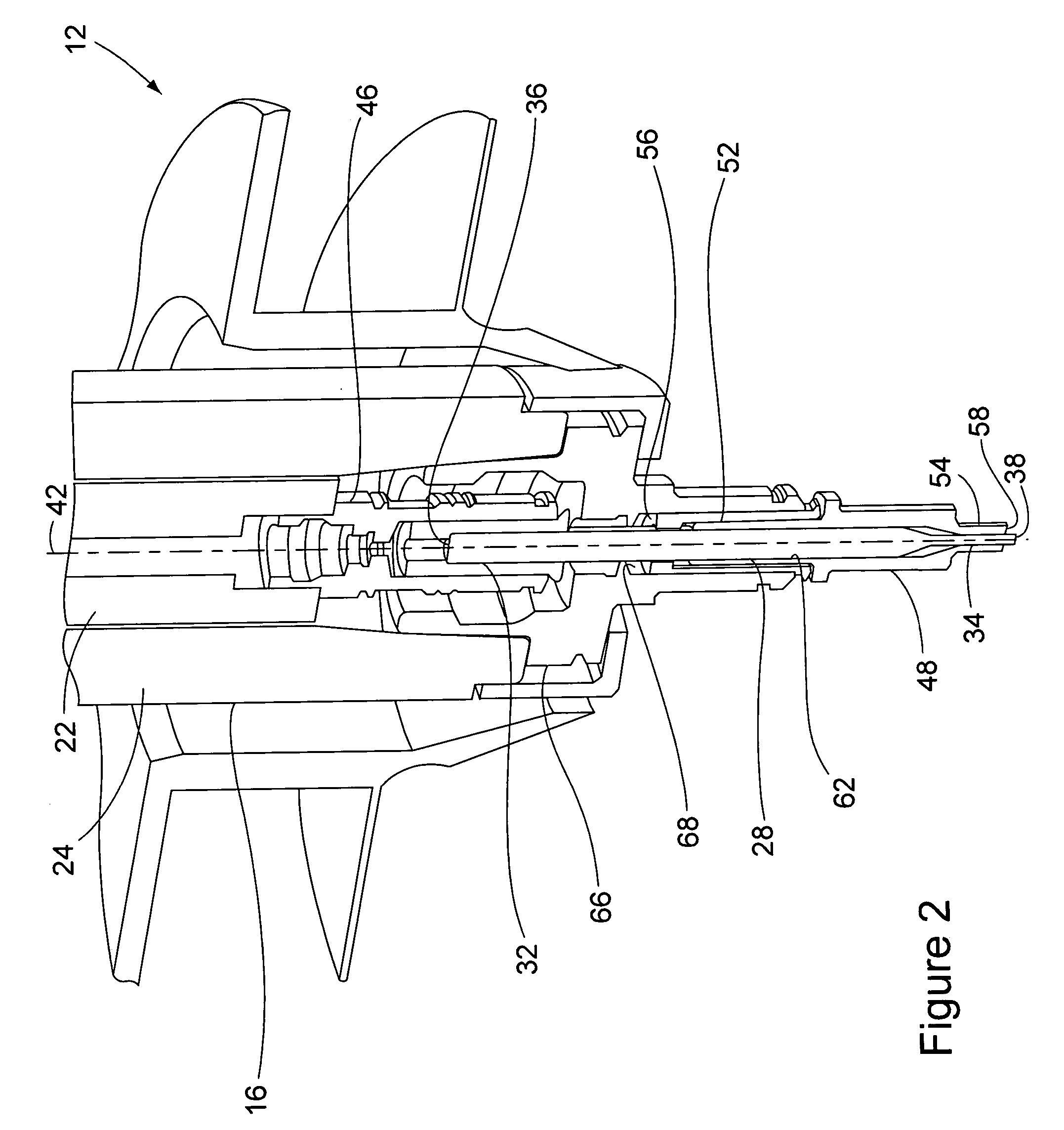Friction stir welding apparatus
a friction stir and welding apparatus technology, applied in the direction of soldering apparatus, manufacturing tools, auxillary welding devices, etc., can solve the problems of low tolerance between prior art poor run-out tolerance or close fit between pin and shoulder, impracticality of maintaining tight tolerance between pin and shoulder tools, etc., to achieve better friction stir welds, reduce tolerances, and facilitate replacement of the two tools
- Summary
- Abstract
- Description
- Claims
- Application Information
AI Technical Summary
Benefits of technology
Problems solved by technology
Method used
Image
Examples
Embodiment Construction
[0021]FIG. 1 shows a portion of a conventional friction stir welding machine 12, for example a milling machine, that has been modified by the tool-in-tool apparatus of the present invention to perform friction stir welding operations. Because various types of milling machines exist and their constructions are well known, the component parts of the machine 12 shown in FIG. 1 will not be described in detail. The machine 12 includes a spindle carriage 14 that supports the friction stir welding tool-in-tool apparatus of the invention over materials to be welded (not shown). As is conventional, the machine 12 is capable of moving the materials to be welded laterally relative to the spindle carriage 14 in performing the welding operation. The spindle carriage 14 suspends a spindle housing 16 from pivot assemblies 18. The spindle housing 16 contains the friction stir welding tool-in-tool apparatus of the invention. The connection of the spindle housing 16 to the carriage 14 by the pivot as...
PUM
| Property | Measurement | Unit |
|---|---|---|
| length | aaaaa | aaaaa |
| rate of rotation | aaaaa | aaaaa |
| rotation | aaaaa | aaaaa |
Abstract
Description
Claims
Application Information
 Login to View More
Login to View More - R&D
- Intellectual Property
- Life Sciences
- Materials
- Tech Scout
- Unparalleled Data Quality
- Higher Quality Content
- 60% Fewer Hallucinations
Browse by: Latest US Patents, China's latest patents, Technical Efficacy Thesaurus, Application Domain, Technology Topic, Popular Technical Reports.
© 2025 PatSnap. All rights reserved.Legal|Privacy policy|Modern Slavery Act Transparency Statement|Sitemap|About US| Contact US: help@patsnap.com



